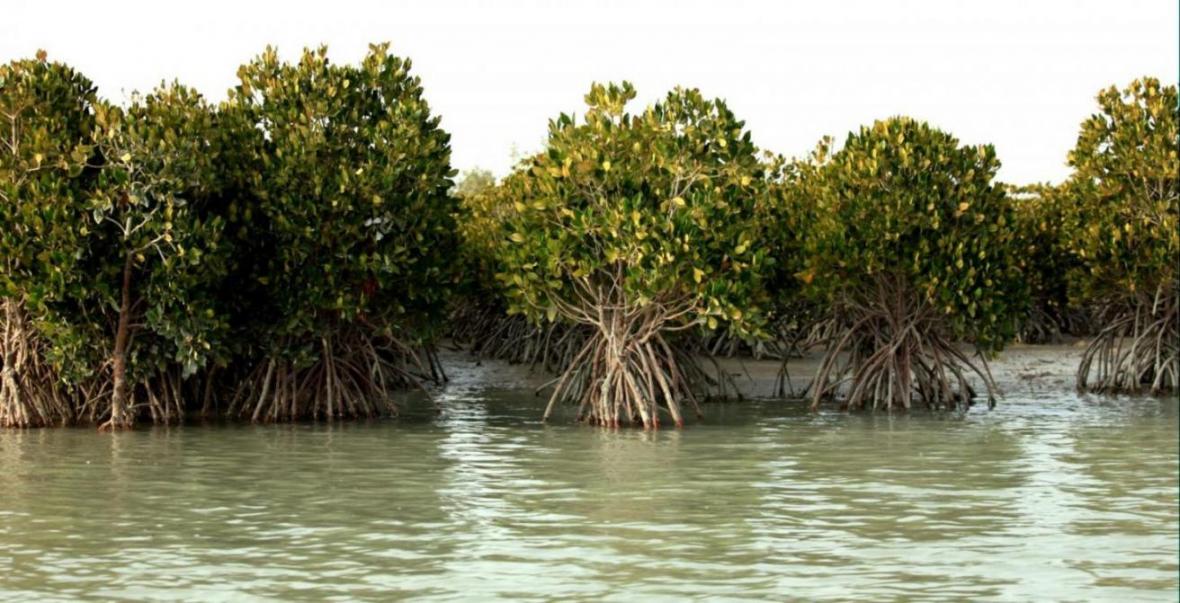Mangrove forests of Qeshm island are among the unique natural attractions on the southern coast of Iran.
The floating forests spread over an area of 7,500 hectares, a green strip in northwestern coasts of Qeshm. The forests also surround the port village of Laft in the Central District of Qeshm. Grey or white mangrove, three to eight meters tall, is the species dominating the forests. The tree is scientifically known as Avicennia marina, locally called hara. The second most prolific tree of the forest is loop-root or red mangrove, scientifically known as Rhizophora mucronata.
Mangroves usually grow in intertidal zones, within tropical and subtropical coastal rivers, estuaries and bays, where they receive rich organic materials, according to irandeserts.com.
The low tide stays for six or seven hours, during which the mangroves are fully back to the show, and their sludgy beds appear out of the water. Being aerial and able to photosynthesize, their roots are higher than the ground. Crabs, green turtles, and creeping fishes come ashore by the spongy roots of the mangroves to bask in the sun. Travelers are recommended to beware of venomous aquatic snakes. The harmonious beauty of the forest, however, culminates in the setting sun.
At high tides, the mangroves are submerged. They waver under the water, some with branches still floating on the surface.
Mangroves have bright green leaves and twigs, and usually bear yellow blossoms and sweet almond-shaped fruits from mid July to August. The seeds fall into the water, where waves take them to quieter parts of the sea, usually situated between Qeshm and the port of Bandar-Khamir on the northern coast of the Persian Gulf. Once fixed in the briny sea bed, usually three meters deep, the seeds start to germinate. The tree is very slow and patient in its growth.
The vast forest is a safe habitat for egrets, terns, storks, seagulls, herons, cormorants, fish eagles, spoonbills, pelicans, flamingos, and many tropical birds. It is also a hospitable winter quarter for migratory birds.


